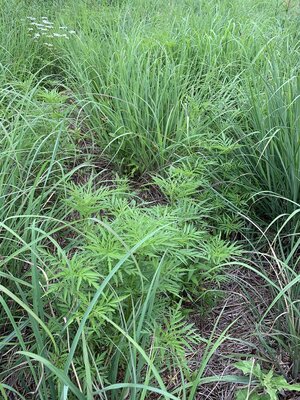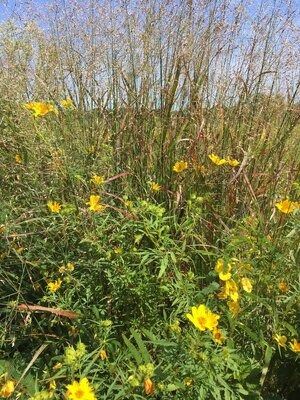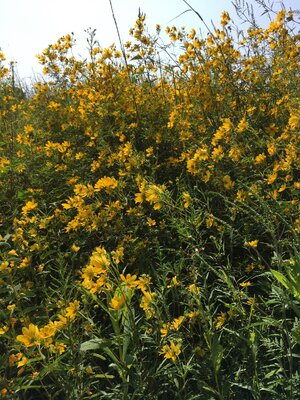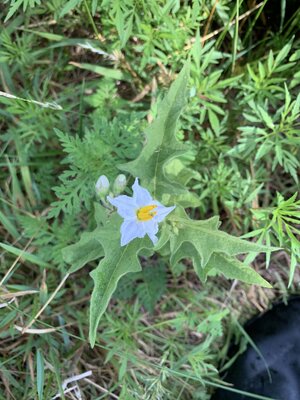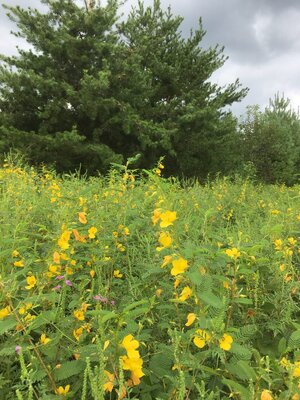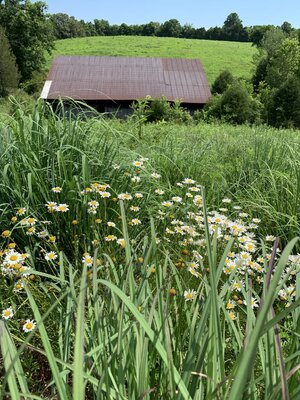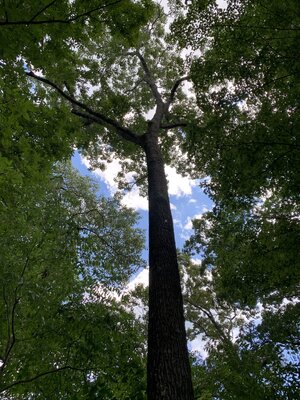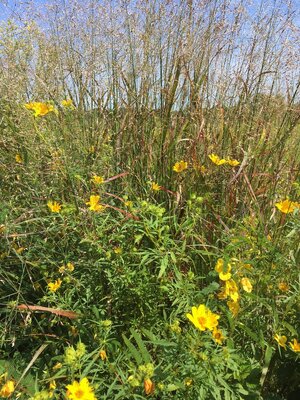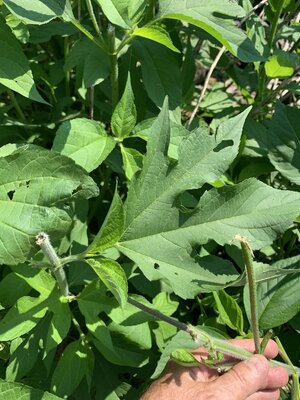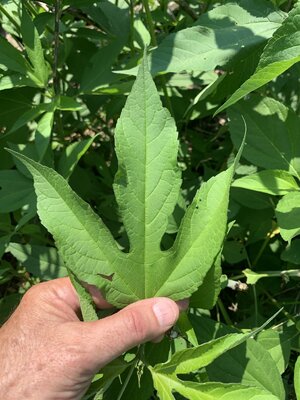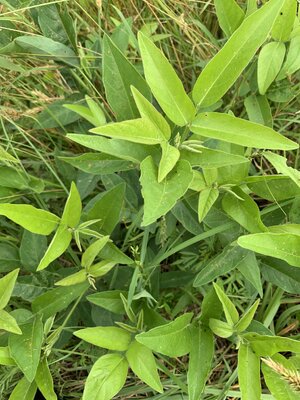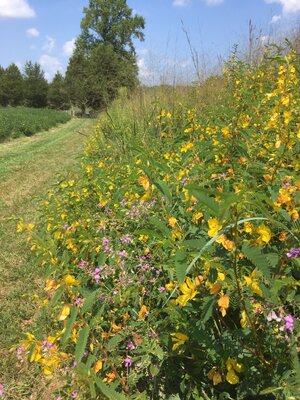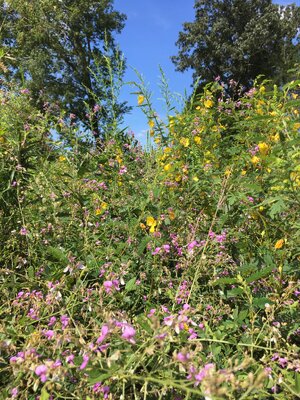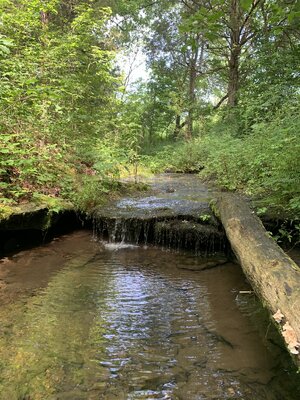Let’s get up and continue walking
First, we will examine an area that was mowed this year in Mid May and see what is taking place about a month later. You can easily see the clumps of native grasses starting to shoot up. We will talk about the different grasses later on, but today, I want to focus on the areas between the grass clumps. This is where the forbs (both annuals and perennials) fill in part of the empty spaces. These empty spaces are like highways where rabbits and other small creature travel, feed and escape predators.
This is one of the things that sets beneficial native grasses apart from introduced species like Johnson Grass. You don’t want a monoculture of grass, and that’s what Johnson Grass will create. It builds a fibrous root system and chokes out everything else. Another difference is that Johnson Grass will just flatten in the winter, but the right native grasses and forbs will stand the winter well and continue to provide valuable cover through the next spring.
Native grasses can also tiller and fill in space, but it happens to a lesser extent than with Johnson Grass. The pictures below show a 10 year old prairie, and you will see that there is still a lot of space between the clumps. At some other places in the fields, the spaces are even greater.
Both the grasses and forbs are important. The grasses provide tall security cover for deer, and the forbs provide food for them and other creatures. Some forbs also get very tall and provide a dual benefit – both food and cover.
The first pictures below is taken from the side, and it appears that we only have grass. But look in the pictures below it where we are looking straight down, and you will see the highways between the grass clumps and some forbs coming up. After we look at these pictures we will discuss each of the forbs we see.
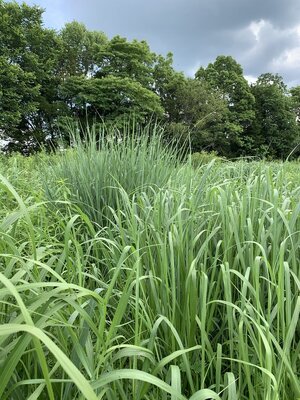
In this first picture you see three forbs. In the middle is Tickseed Sunflower, near the top left is Oxeye Daisy, and at the lower right is one small Carolina Horsenettle plant.
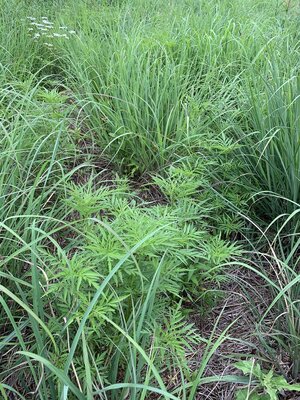
In this next picture you see mostly Partridge Pea with just a little Common Ragweed on the right side of the picture.

Here is a better picture of Common Ragweed:

In this post today we have talked about the difference between Native Grasses and invasive species like Johnson Grass. We also identified five forbs – Tickseed Sunflower, Oxeye Daisy, Carolina Horsenettle, Partridge Pea and Common Ragweed. We will stop now, and when we come back we will talk about the attributes of these five forbs that we identified. After that we will look at pictures of many other forbs growing in the prairie and discuss them.





